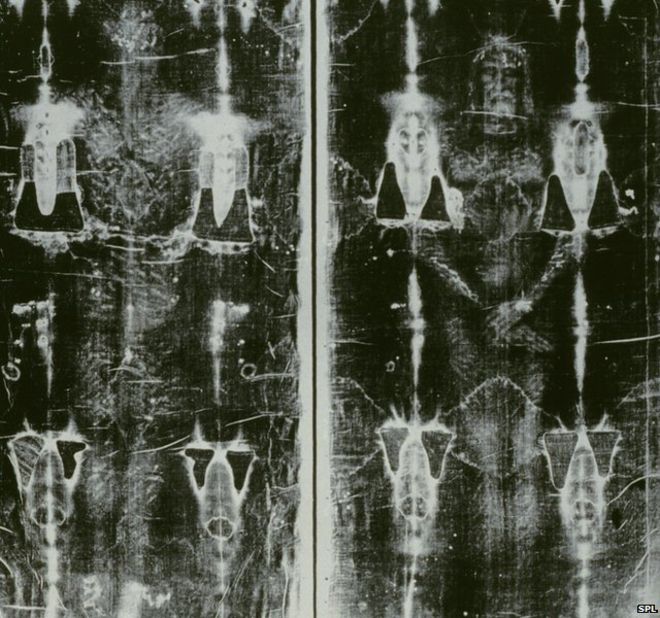Continued use of fossil fuels will negate radiocarbon analysis techniques.

Shroud of Turin
British scientists from Imperial College London have calculated that with continued active emissions of fossil hydrocarbons into the atmosphere, by 2100 the method of radiocarbon analysis will lose accuracy: say, a plant that died in 2100 cannot be distinguished from a plant that lived 2,000 years ago.
The method of radiocarbon analysis is based on the calculation of the percentage content in the sample of the carbon isotope 14 C. The carbon is present in the atmosphere as different isotopes - stable 12 C and 13 C and relatively unstable 14 C (half-life is 5700 ± 30 years).
')
If we accept that as a result of the activity of living organisms a constant carbon exchange occurs, then the content of unstable and stable isotopes in them as a percentage remains constant. When the body dies, the exchange stops, and the amount of 14 C in it begins to gradually decrease (from decay). Therefore, by measuring the percentage of isotopes in a sample, one can calculate how old it is. This technique was invented by Willard Libby in 1946, for which he received the Nobel Prize in 1960.
Over time, scientists empirically calibrated the method - a beautiful linear dependence of age on the number of isotopes did not work, because their content in the samples is affected by a bunch of factors: solar activity, cosmic rays, terrain width, volcanic activity, etc. Therefore, there is a special calibration curve that compares to obtain reliable results. The accuracy of age estimation by this method ranges from 70 to 300 years.

Red Curve - Calibration
This technique is widely used to analyze the age of archaeological and paleontological finds. Among the most famous cases of its application is the study of fragments of the Shroud of Turin , linen, in which, according to legend, wrapped Jesus Christ. Radiocarbon analysis allowed dating the shroud to a period of the 11th — 13th centuries. Skeptics consider such a result a confirmation that the shroud is a medieval fake.
Another memorable story is the Dead Sea Scrolls, or Qumran manuscripts containing the oldest known versions of biblical texts. Their age was estimated at 1917 ± 200 years.
But in the last hundred years, the anthropogenic factor has entered into the business - the content of 14 C has greatly changed, for example, during active nuclear tests. And with the increase in the amount of fossil fuel burned, a serious problem emerged: since this fuel is millions of years old, there are no unstable carbon isotopes in them, so burning them increases the content of stable isotopes in the atmosphere — and therefore changes the percentage of stable and unstable carbon isotopes.
At the current rate of use of fossil fuels, this effect will begin to appear as early as 2020. By about 2050, the 14 C content in the atmosphere will become as small as it is observed in samples 1000 years old; and by the year 2100, such as we find in samples aged 2,000 years.
Source: https://habr.com/ru/post/367765/
All Articles